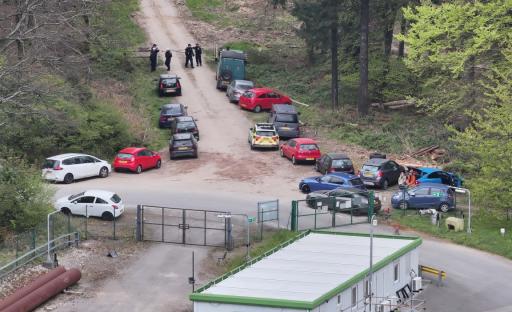Three of the provinces hardest-hit by COVID-19 spent their second pandemic-era Good Friday either adjusting to or bracing for stricter public health measures meant to bring resurgent case counts back in check.
Three regions of Quebec, including the provincial capital, are now under a 10-day lockdown that took effect hours before the province reported the highest daily case load since late January.
On Wednesday, British Columbia imposed what they are calling a three-week long “circuit breaker” across the province hoping to “break the chain of COVID-19 transmission.”
Read more: Hotels taking advantage of Canada's COVID-19 quarantine rules, some travellers allege
Ontario, meanwhile, will pull what it dubs an “emergency brake” at midnight for the entire province, forcing the closure of personal services and in-person dining while imposing tighter capacity limits on both essential and non-essential businesses.
The move came in response to modelling that showed case counts could top 6,000 a day by month's end without intervention.
While the problem in all three provinces is the same — faster-spreading variants and rising hospitalizations — the rules are all slightly different.
Quebec closed schools in the affected regions while Ontario and B.C. did not.
All three are prohibiting indoor gatherings at private residences, but Quebec is also banning outdoor gatherings at homes and cottages. Ontario and B.C. both say it's safe to allow up to 10 people to assemble outside.
Quebec's rules include a curfew banning people from leaving their homes between 9:30 p.m. and 5 a.m. in most regions, though the start of the curfew has been moved back to 8 p.m. in the province's three newly locked-down cities.
Residents of Quebec City, Levis and Gatineau will also see schools close and non-essential business shut down for at least 10 days in a bid to bring soaring local case counts back under control.
Elsewhere, Quebec allows up to 250 people inside a place of worship as long as they can maintain a two metre distance from others. But the number differs for weddings and funerals, where the limit is 25 attendees.
Read more: Vaccinated Americans can resume travel without COVID-19 tests or quarantine: CDC
British Columbia only allows worship outdoors, up to a maximum of 50 people, plus two more to enforce the rules. In Ontario, worship services are limited to 15 per cent capacity.
A new survey suggested Canadians navigating the complex patchwork of public health measures are likely to disregard them altogether and even ignore nearly universal calls from public health officials and politicians to skip Easter gatherings this year.
An online poll done by Leger for the Association for Canadian Studies and the University of Manitoba found more than 40 per cent of the people surveyed feel safe attending family gatherings at this point, and a quarter believe the government is overhyping the dangers of COVID-19.
Toronto mother Marcia Martins said she is scaling back her family's usually large Easter gathering to just four households this year, noting the move feels safe since most attendees don't work outside the home.
“These are just difficult times right now,” she said. “And I'm just glad that there's a way that we can just keep as close to normal — or what our old normal was.”
But for some Ontario retail workers, the coming lockdown is welcome news.
“I think this will help prevent the increasing rates of the virus,” said Odessa Ordanza, a cashier at Shoppers Drug Mart in Mississauga, Ont.
The 22-year-old said “it's still kind of scary going to work,” particularly with some people still coming into the store without masks on.
But one home-care supervisor west of Toronto has a much harsher appraisal of the government's current approach, which allows schools to stay open and allows most retailers to operate with capacity caps rather than shutting them down entirely.
“I don't know if it's the right approach,” said Terri Neufeld of Mississauga, noting comparable measures have been in place locally for months. “I don't know if we need to have a more targeted approach? What we've been doing (in Ontario) has really not been working.”
View link »Many provinces opted not to report new case data on the Good Friday holiday. Those that did included Quebec, which added 1,314 new cases to its total.
It's the third day in a row the province tallied more than 1,000 new infections, and the highest daily number since Jan. 26.
Saskatchewan reported 254 new infections on Friday, while Alberta's Chief Medical Officer of Health Dr. Deena Hinshaw estimated there had been about 1,100 new infections over the most recent 24-hour period.
New Brunswick and Nova Scotia, meanwhile, reported nine new infections each.
Nova Scotia Premier Iain Rankin says the Easter weekend in his province “is looking very different” than in most other jurisdictions, but said people still need to be careful.
— with files from Nicole Thompson and Denise Paglinawan in Toronto.



